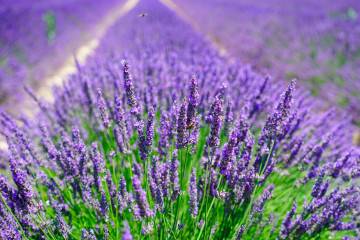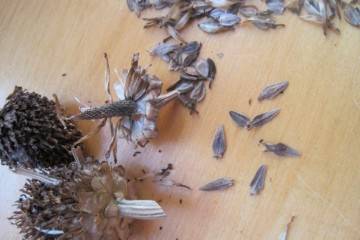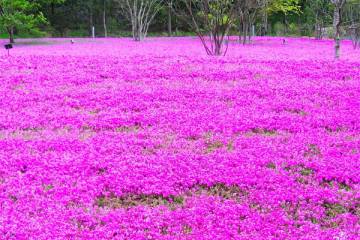Alpine aster (Aster alpinus) - growing from seeds
Content:
- What does the alpine aster look like
- Description of white, blue, pink types of asters
- Growing from seeds
- Planting in a seedless way
- How Alpine perennial aster reproduces
- Features of caring for aster alpinus at home
- When and how it blooms
- Transplant after purchase and during reproduction
- Possible growing problems
Alpine aster (also called alpine chamomile) is ideal for decorating a site in temperate latitudes. It is unpretentious to the ground, grows well on rocky soil. Differs in long flowering, winters well without shelter.
What does the alpine aster look like
For its external similarity and natural region of growth, the flower is called mountain aster. Many species of plants have been bred with a height of 25 to 80 cm.
Plant characteristics
Brief description of the flower:
- stems are erect, pubescent, actively branching in the upper part, forming a dense bush;
- leaves are small, spatulate with a carved edge;
- flowers are collected in a basket with a diameter of up to 6 cm;
- achenes are small, oval, with a tuft in the upper part;
- the root system is fibrous with a small rhizome and numerous branches.
What family does it belong to
Herbaceous perennial plant "Aster" subspecies "Alpinus" refers to ground cover shrubs and shrubs of the Asteraceae or Compositae family. The culture got its name from the Greek word "astra". Other names for the plant are Korzhinsky's aster or false aster.
Briefly about the history of appearance
Swedish botanist Karl Linnaeus described the flower in 1753. Breeders immediately drew attention to the species diversity of the culture and started breeding. Now there are more than 250 varieties and varieties.
Description of white, blue, pink types of asters
Flowers are grown in many countries of the Northern Hemisphere. There are species in the wild that grow in southern Africa. Asters differ in the size and color of the buds, the height of the bush.
Popular varieties
- White Alps is a shrub 25-30 cm high, flowers resemble chamomile - a yellow center framed by white petals. Abundant flowering;
- Albus (Albus) - undersized variety of the Alpine aster. Shoot height up to 20 cm. White variety, baskets up to 4 cm in diameter;
- The line of Blue varieties forms semi-double buds of blue shades with a diameter of up to 8 cm. The height of the bush is up to 50 cm. Used for border planting;
- Illaria is a low-growing, frost-resistant variety. Various colors: white, pink, blue, blue;
- Pink is an early flowering species that blooms in May. Grows well in shady areas. Forms many baskets with a diameter of 4 cm;
- Rosea is another pink-colored, semi-double variety. Differs in rapid growth, every 3 years the bush has to be divided;
- Blue aster is distinguished by a violet shade of buds with a diameter of 6 cm. The shoots are low, up to 25 cm tall. Used for home cultivation;
- Alpine mix - collection of semi-double medium-sized varieties, used for alpine lawns.
Growing from seeds
New varieties of flowers come to Russia by seeds. Novice gardeners will be helped by a small instruction on the agrotechnics of alpine chamomile: growing, care, transplanting. Seeds retain their germination capacity for no more than 2 years.
Planting capacity and soil
Sowing is carried out in individual pots or a common planting container with holes for water drainage. Astra is recovering well after transplantation. As for the soil:
- do it yourself, mixing 1: 1 turf and compost soil;
- get ready-made potting mix, universal or for cucumbers.
Seed preparation and sowing
It is advisable to keep the inoculum in a pink solution of manganese for 2–4 hours to prevent fungal infections. Seeds are scattered on damp ground, covered with a layer of dry soil 1 cm thick on top. Seedlings appear in 4-6 days.
Timing
The buds appear in 1.5 months. Depending on climatic conditions, sowing is carried out at the end of February to mid-March.
How to care for seedlings
Moisten the ground with a spray gun as it dries. Seedlings are placed on the south side or try to grow backlit shoots. Periodically loosened so that a crust does not form. Top dressing begins after the pick, when the 4th full-fledged leaf appears.
Landing in open ground
Plants are transplanted to a permanent place after recurrent frosts. Before this, the seedlings are hardened - they are taken out to a cool place for several hours. Before planting, the soil is spilled with a solution of fungicide or manganese. The roots are pinched by 1/3 so that they grow better.
Planting in a seedless way
It is difficult to grow a perennial in a permanent place; you need to constantly look after the seedlings. Seeds are sown immediately after the snow melts, covered with foil. Seedlings will appear in a couple of weeks. The plantings loosen, thin out or dive the plants, leaving between the bushes from 30 to 5 cm, depending on the width of the formed crown. At the end of summer, the buds that appear are cut off, allowing the aster to take root.
How Alpine perennial aster reproduces
To preserve the species, varietal hybrids are propagated vegetatively: by cuttings or rooted cuttings.
Dividing the bush
Bushes older than 3 years are divided, the operation is carried out throughout the season. For rooting before wintering, the aster will take a month. The bush is divided with a sharp knife, shaking out the earthen ball. Before planting, the cuttings are kept in water for at least 3 hours.

When separating parts, the main thing is not to damage the growth points so that there is a rapid growth of new bushes
Cuttings
Shoots are cut into pieces so that there are 3 leaves on each cuttings. Immersed in a solution with a growth stimulant. Rooted in the potting mix after the appearance of white roots. It is better to plant cuttings in open ground in spring or at the very beginning of autumn.
Features of caring for aster alpinus at home
Bushes are good not only in the garden, but also at home. They begin to bloom in June, continuing to emit buds until October. If the aster is properly looked after, it will delight for many years.
Temperature
During the flowering period, the maximum temperature is no more than + 27 ° C. In winter, during the rest period, the pot is removed to a cool place, where it is not higher than + 18 ° C.
Lighting
Aster grows well on the south and east side, backlighting is required on the west and north flower.
Watering
The bush needs water in spring, summer. Aster is watered by sprinkling. Since October, watering is reduced, the earth is moistened with a spray bottle, and the earthy coma is not allowed to dry out.
Spraying
In the spring, the bush is washed under the shower, with the onset of heat, it is regularly sprayed so that the leaves breathe.
Humidity
The flower is susceptible to root rot, does not like stagnant water. The bush tolerates dry winter air normally.
Priming
Vermiculite or coconut fibers are added to the soil mixture to retain moisture. The pH level is maintained within the range of 5.5–6.5.
Top dressing
The flower is fed regularly, every 2 weeks, ¼ of the norms of complex fertilizers for home flowers are added to the water for irrigation. During the budding period, they are treated with "Ovary" or the "Growth" preparation.
When and how it blooms
The buds are medium-sized, the diameter varies from 3 to 8 cm. There are up to 100 inflorescences on the bush.
Types of flowers
The petals are the ligulate flowers of the aster. In the center - tubular, the envelope is formed from transitional flowers.
Flower shapes
Most varieties have flat disc-shaped, there are species with semi-double and double baskets.
Flowering period
Early flowering varieties bloom in May, release flower arrows until the end of August. The rest of the asters bloom from July to October, some species bloom until the end of October.
Changes in care during flowering
Throughout the entire period, complex fertilizers are applied twice a season. Faded buds are cut off.

In the Blue aster, tubular flowers form a hemispherical cap, testes are formed only in the central part of the basket
Transplant after purchase and during reproduction
When transplanting, an earthen ball is broken, the roots are treated with Fitosporin or another fungicide. Pinch small roots 1/3 to stimulate the growth of new ones.
Possible growing problems
Many varieties are not susceptible to pests and diseases.
Leaf problems
Withering occurs from insufficient watering and bacterial damage to the roots.
Pests
Aphids are destroyed with insecticides, spider mites - with acaricides. Suffice it to be processed twice with a weekly interval.
Diseases
Rust, wilting is eliminated by fungicides. For prevention, tillage is carried out.
Signs of improper care
From an excess of nitrogen, flowering decreases, with a lack of phosphorus and calcium, the size of flower baskets decreases.
Aster is suitable for curbs, parquet lawns, rocky corners of the garden. The flower conquered gardeners with a long flowering period, a variety of shades. The plant is not demanding on soil, care, lighting. Astra quietly coexists with other cultures, conifers.



















